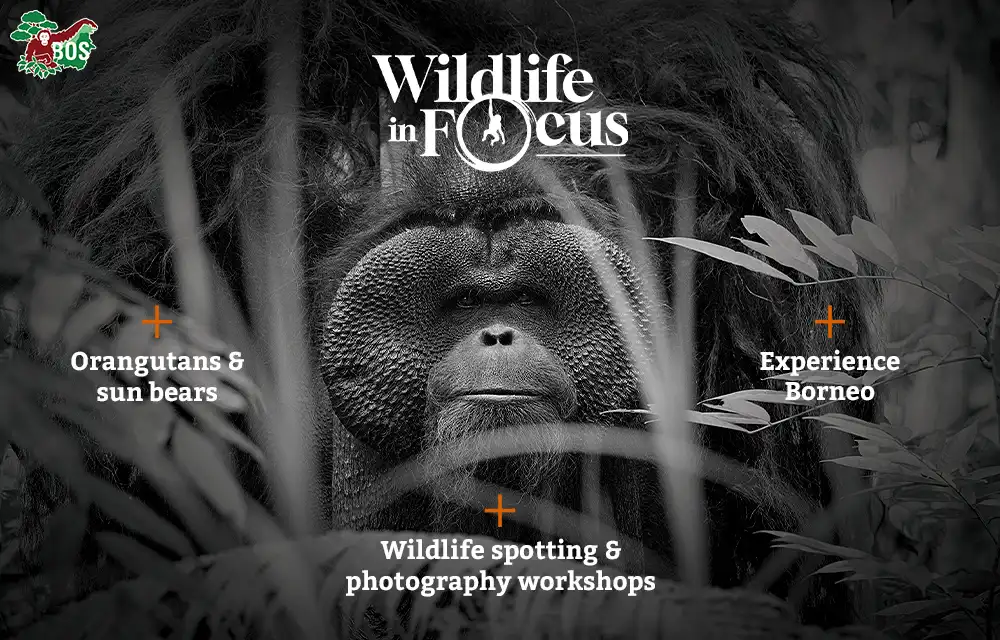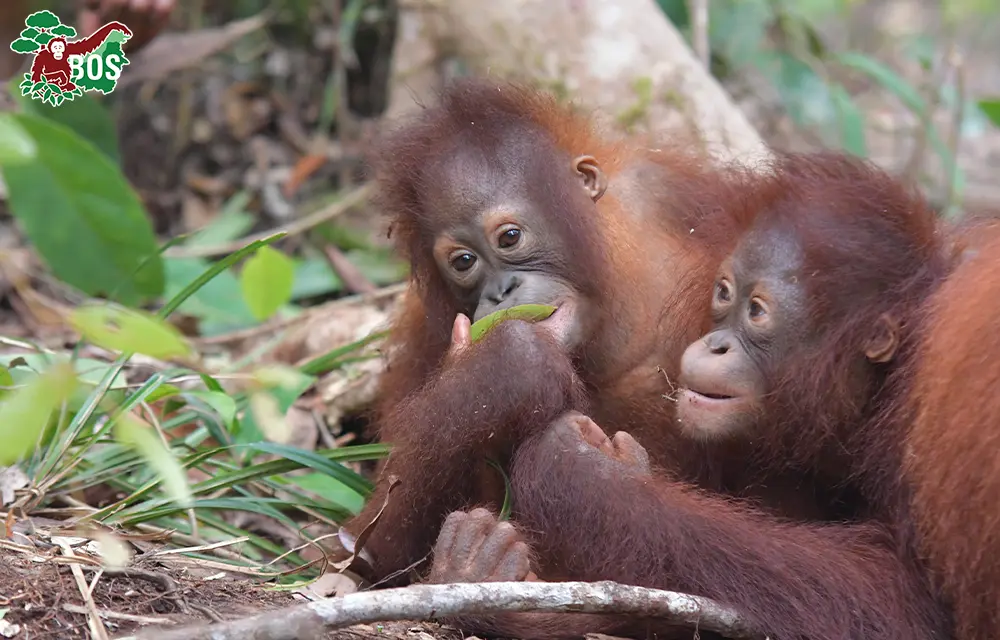In early 2024, our Post-Release Monitoring (PRM) team started the days with a phenology expedition in Bukit Baka Bukit Raya National Park (TNBBBR), specifically in the Hiran river. The phenology expedition was conducted to find out what plants are available around the release area, which is needed to estimate the availability of food such as fruit and other trees that can be consumed by orangutans in the next few years. This survey was also used to assess the potential of trees that could be utilised as nesting sites for orangutans.
A few days later, our PRM team decided to observe released orangutans around the Hiran river after conducting the phenology survey. Unexpectedly, the PRM team encountered Svenja. Svenja is an orangutan who had a sympathetic background story when she arrived at the rehabilitation centre. Upon entering the rehabilitation centre, Svenja was one of our orphan female orangutans who arrived lonely. She was 1.5 years old and in poor condition. Fortunately, after attending forest school and undergoing a successful rehabilitation process for 18 years, she had the opportunity to return to the forest in June 2023, when she was released in the TNBBBR.
This encounter with Svenja in TNBBBR 6 months after her release was heartwarming, as she was observed eating, and ORM team immediately rushed to observe her and take pictures of her. We were glad to see that Svenja was able to forage independently in the wild, eating fruits such as figs or ara (Ficus sp.), gandasuli rhizomes (Hedychium coronarium), ujau fruit, and poring leaves. Sometimes Svenja also eats fig bark. Parts of the fig tree are suitable for orangutans to eat because they are high in nutrients, such as the fruit which contains vitamins, iron, protein, and calcium, and the bark which contains various bioactive compounds.
Not only that, this large, grooved, and sturdy fig tree has many benefits besides orangutan food, the PRM team saw that Svenja also uses the fig tree as a place to build a nest to rest. This large and sturdy tree has many benefits besides orangutan food. There is no doubt that Svenja is often seen relaxing on top of the fig tree while eating her food and resting.
Svenja was also observed playing on the surface in the sand and shallow water areas. When in the sand area, she performs play activities such as jumping, rolling, showering the sand on her body and hands, and also digging in the sand like a child playing on the beach. He seemed very happy to play in the sand, which is something orangutans do in the wild because they are curious. This activity can also develop the orangutans’ motor and sensory abilities to learn more about what is around them.
It was great to meet Svenja for some time, seeing her make the most of her surroundings and the trees in the Hiran river made us believe in our hopes for the future of orangutans!
Text by: PRM Team at Himba Pambelum Monitoring Camp, TNBBBR, Central Kalimantan
Will you help us rescue, rehabilitate and release orangutans back to freedom? Thank you!





